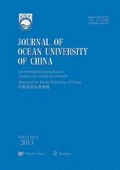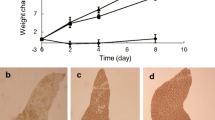Abstract
The ciliate Tetrahymena is a valuable model organism in the studies of ecotoxicology. Changes in intracellular metabolism are caused by exogenous chemicals in the environment. Intracellular metabolite changes signify toxic effects and can be monitored by metabolomics analysis. In this work, a protocol for the GC-MS-based metabolomic analysis of Tetrahymena was established. Different extraction solvents showed divergent effects on the metabolomic analysis of Tetrahymena thermophila. The peak intensity of metabolites detected in the samples of extraction solvent Formula 1 (F1) was the strongest and stable, while 61 metabolites were identified. Formula 1 showed an excellent extraction performance for carbohydrates. In the samples of extraction solvent Formula 2 (F2), 66 metabolites were characterized, and fatty acid metabolites were extracted. Meanwhile, 57 and 58 metabolites were characterized in the extraction with Formula 3 (F3) and Formula 4 (F4), respectively. However, the peak intensity of the metabolites was low, and the metabolites were unstable. These results indicated that different extraction solvents substantially affected the detected coverage and peak intensity of intracellular metabolites. A total of 74 metabolites (19 amino acids, 11 organic acids, 2 inorganic acids, 11 fatty acids, 11 carbohydrates, 3 glycosides, 4 alcohols, 6 amines, and 7 other compounds) were identified in all experimental groups. Among these metabolites, amino acids, glycerol, myoinositol, and unsaturated fatty acids may become potential biomarkers of metabolite set enrichment analysis for detecting the ability of T. thermophila against environmental stresses.
Similar content being viewed by others
References
Aliferis, K. A., and Jabaji, S., 2011. Metabolomics–A robust bioanalytical approach for the discovery of the modes-of-action of pesticides: A review. Pesticide Biochemistry and Physiology, 100: 105–117.
Barbosa, G. B., Jayasinghe, N. S., Natera, S. H., Inutan, E. D., Peteros, N. P., and Roessner, U., 2017. From common to rare zingiberaceae plants_A metabolomics study using GC-MS. Phytochemistry, 140: 141–150.
Bo, T., Liu, M., Zhong, C., Zhang, Q., Su, Q., Tan, Z., Han, P., and Jia, S., 2014. Metabolomic analysis of antimicrobial mechanisms of ε-poly-l-lysine on Saccharomyces cerevisiae. Journal of Agricultural and Food Chemistry, 62: 4454–4465.
Bonnet, J. L., Bonnemoy, F., Dusser, M., and Bohatier, J., 2008. Toxicity assessment of the herbicides sulcotrione and mesotrione toward two reference environmental microorganisms: Tetrahymena pyriformis and Vibrio fischeri. Archives of Environmental Contamination and Toxicology, 55: 576–583.
Bricheux, G., Bonnet, J. L., Bohatier, J., Morel, J. P., and Morel-Desrosiers, N., 2013. Microcalorimetry: A powerful and original tool for tracking the toxicity of a xenobiotic on Tetrahymena pyriformis. Ecotoxicology and Environmental Safety, 98: 88–94.
Bundy, J. G., Davey, M. P., and Viant, M. R., 2009. Environ mental metabolomics: A critical review and future perspectives. Metabolomics, 5: 3.
Cao, B., Aa, J., Wang, G., Wu, X., Liu, L., Li, M., Shi, J., Wang, X., Zhao, C., and Zheng, T., 2011. GC-TOFMS analysis of metabolites in adherent MDCK cells and a novel strategy for identifying intracellular metabolic markers for use as cell amount indicators in data normalization. Analytical and Bioanalytical Chemistry, 400: 2983–2993.
Chen, T., Liu, Y., Li, M.-H., Xu, H., Sheng, J., Zhang, L., and Wang, J., 2016a. Integrated 1H NMR-based metabolomics analysis of earthworm responses to sub-lethal Pb exposure. Environmental Chemistry, 13: 792–803.
Chen, X., Gao, S., Liu, Y., Wang, Y., Wang, Y., and Song, W., 2016b. Enzymatic and chemical mapping of nucleosome distribution in purified micro- and macronuclei of the ciliated model organism, Tetrahymena thermophila. Science China Life Science, 59: 909–19.
Chen, X., Wang, Y. R., Sheng, Y. L., Warren, A., and Gao, S., 2018. GPSit: An automated method for evolutionary analysis of nonculturable ciliated microeukaryotes. Molecular Ecology Resources, 18: 700–713.
Collins, K., and Gorovsky, M. A., 2005. Tetrahymena thermophila. Current Biology, 15: 317–318.
Ding, M., Wang, X., Yang, Y., and Yuan, Y., 2011. Metabolomic study of interactive effects of phenol, furfural, and acetic acid on Saccharomyces cerevisiae. Omics, 15: 647–653.
Ekman, D., Teng, Q., Jensen, K., Martinovic, D., Villeneuve, D., Ankley, G., and Collette, T., 2007. NMR analysis of male fathead minnow urinary metabolites: A potential approach for studying impacts of chemical exposures. Aquatic Toxicology, 85: 104–112.
Evans, R. I., McClure, P. J., Gould, G. W., and Russell, N. J., 1998. The effect of growth temperature on the phospholipid and fatty acyl compositions of non-proteolytic Clostridium botulinum. International Journal of Food Microbiology, 40: 159–167.
Feng, L., Fu, C., Yuan, D., and Miao, W., 2014. A P450 gene associated with robust resistance to DDT in ciliated protozoan, Tetrahymena thermophila by efficient degradation. Aquatic Toxicology, 149: 126–132.
Gao, S., Xiong, J., Zhang, C., Berquist, B. R., Yang, R., Zhao, M., Molascon, A. J., Kwiatkowski, S. Y., Yuan, D., Qin, Z., Wen, J., Kapler, G. M., Andrews, P. C., Miao, W., and Liu, Y., 2013. Impaired replication elongation in Tetrahymena mutants deficient in histone H3 Lys 27 monomethylation. Genes & Development, 27: 1662–79.
García-Cañaveras, J. C., López, S., Castell, J. V., Donato, M. T., and Lahoz, A., 2016. Extending metabolome coverage for untargeted metabolite profiling of adherent cultured hepatic cells. Analytical and Bio-analytical Chemistry, 408: 1217–1230.
Gillis, J. D., Price, G. W., and Prasher, S., 2017. Lethal and sublethal effects of triclosan toxicity to the earthworm Eisenia fetida assessed through GC-MS metabolomics. Journal of Hazardous Materials, 323: 203–211.
Heijne, W. H., Kienhuis, A. S., Van Ommen, B., Stierum, R. H., and Groten, J. P., 2005. Systems toxicology: Applications of toxicogenomics, transcriptomics, proteomics and metabolomics in toxicology. Expert Review of Proteomics, 2: 767–780.
Ibáñez, C., Simó, C., Palazoglu, M., and Cifuentes, A., 2017. GC-MS based metabolomics of colon cancer cells using different extraction solvents. Analytica Chimica Acta, 986: 48–56.
Jozefczuk, S., Klie, S., Catchpole, G., Szymanski, J., Cuadros-Inostroza, A., Steinhauser, D., Selbig, J., and Willmitzer, L., 2010. Metabolomic and transcriptomic stress response of Escherichia coli. Molecular Systems Biology, 6: 364.
Li, W., Li, H., Zhang, J., and Tian, X., 2015. Effect of melamine toxicity on Tetrahymena thermophila proliferation and metallothionein expression. Food and Chemical Toxicology, 80: 1–6.
Liu, M., Zhong, C., Wu, X., Wei, Y., Bo, T., Han, P., and Jia, S., 2015. Metabolomic profiling coupled with metabolic network reveals differences in Gluconacetobacter xylinus from static and agitated cultures. Biochemical Engineering Journal, 101: 85–98.
Luo, H., Li, X., Fang, T., Liu, P., Zhang, C., Xie, H., and Sun, E., 2015. The toxicity of binary mixture of Cu (II) ion and phenols on Tetrahymena thermophila. Ecotoxicology and Environmental Safety, 113: 412–417.
Oliveros, J. C., 2015. VENNY. An interactive tool for comparing lists with Venn diagrams. {rs http://bioinfogp.cnb.csic.es/ url}tools/venny/index.html.
Ralston-Hooper, K., Hopf, A., Oh, C., Zhang, X., Adamec, J., and Sepúlveda, M. S., 2008. Development of GCxGC/TOFMS metabolomics for use in ecotoxicological studies with invertebrates. Aquatic Toxicology, 88: 48–52.
Sauvant, N., Pepin, D., and Piccinni, E., 1999. Tetrahymena pyriformis: A tool for toxicological studies. Chemosphere, 38: 1631–1669.
Viant, M. R., Pincetich, C. A., and Tjeerdema, R. S., 2006. Metabolic effects of dinoseb, diazinon and esfenvalerate in eyed eggs and alevins of Chinook salmon (Oncorhynchus tshawytscha) determined by 1 H NMR metabolomics. Aquatic Toxicology, 77: 359–371.
Wang, C. D., Zhang, T. T., Wang, Y. R., Katz, L. A., Gao, F., and Song, W., 2017. Disentangling sources of variation in SSU rDNA sequences from single cell analyses of ciliates: Impacts of copy number variation and experimental errors. Proceedings of the Royal Society B: Biological Sciences, 284: 20170425.
Wang, Y. Y., Chen, X., Sheng, Y., Liu, Y., and Gao, S., 2017a. N6-adenine DNA methylation is associated with the linker DNA of H2A.Z-containing well-positioned nucleosomes in Pol II-transcribed genes in Tetrahymena. Nucleic Acids Research, 45: 11594–11606.
Wang, Y. Y., Sheng, Y., Liu, Y., Pan, B., Huang, J., Warren, A., and Gao, S., 2017b. N(6)-methyladenine DNA modification in the unicellular eukaryotic organism Tetrahymena thermophila. European Journal of Protistology, 58: 94–102.
Wang, Y. R., Wang, Y., Sheng, Y., Huang, J., Chen, X., Al-Rasheid, K. A. S., and Gao, S., 2017c. A comparative study of genome organization and epigenetic mechanisms in model ciliates, with an emphasis on Tetrahymena, Paramecium and Oxytricha. European Journal of Protistology, 61: 376–387.
Xia, J., Psychogios, N., Young, N., and Wishart, D. S., 2009. MetaboAnalyst: A web server for metabolomic data analysis and interpretation. Nucleic Acids Research, 37: 652–660.
Xiong, J., Gao, S., Dui, W., Yang, W., Chen, X., Taverna, S. D., Pearlman, R. E., Ashlock, W., Miao, W., and Liu, Y., 2016. Dissecting relative contributions of cis- and trans-determinants to nucleosome distribution by comparing Tetrahymena macronuclear and micronuclear chromatin. Nucleic Acids Research, 44: 10091–10105.
Xu, J., Yuan, Y., Liang, A., and Wang, W., 2015. Chromodomain protein Tcd1 is required for macronuclear genome rearrangement and repair in Tetrahymena. Scientific Reports, 5: 10243.
Zhang, T. T., Wang, C. D., Katz, L. A., and Gao, F., 2018. A paradox: Rapid evolution rates of germline-limited sequences are associated with conserved patterns of rearrangements in cryptic species of Chilodonella uncinata (Protist, Ciliophora). Science China Life Science, 61: 1071–1078.
Zhao, X. L., Wang, Y. Y., Wang, Y. R., Liu, Y., and Gao, S., 2017. Histone methyltransferase TXR1 is required for both H3 and H3.3 lysine 27 methylation in the well-known ciliated protist Tetrahymena thermophila. Science China Life Science, 60: 264–270.
Zhao, Y., Yi, Z. Z., Warren, A., and Song, W. B., 2018. Species delimitation for the molecular taxonomy and ecology of a widely distributed microbial eukaryotes genus Euplotes (Alveolata, Ciliophora). Proceedings of the Royal Society B: Biological Sciences, 285: 20172159.
Zhou, X., Wang, Y., Yun, Y., Xia, Z., Lu, H., Luo, J., and Liang, Y., 2016. A potential tool for diagnosis of male infertility: Plasma metabolomics based on GC-MS. Talanta, 147: 82–89.
Acknowledgments
This study was supported by the National Natural Science Foundation of China (Nos. 31572253, 31601857, 31702009), the Science Foundation for Youths of Shanxi Province (No. 201801D221241), and the Postdoctoral Science Foundation of China (No. 2014M551961).
Author information
Authors and Affiliations
Corresponding author
Rights and permissions
About this article
Cite this article
Xu, J., Bo, T., Song, W. et al. Metabolomic Fingerprint of the Model Ciliate, Tetrahymena thermophila Determined by Untargeted Profiling Using Gas Chromatography-Mass Spectrometry. J. Ocean Univ. China 18, 654–662 (2019). https://doi.org/10.1007/s11802-019-3974-7
Received:
Revised:
Accepted:
Published:
Issue Date:
DOI: https://doi.org/10.1007/s11802-019-3974-7




